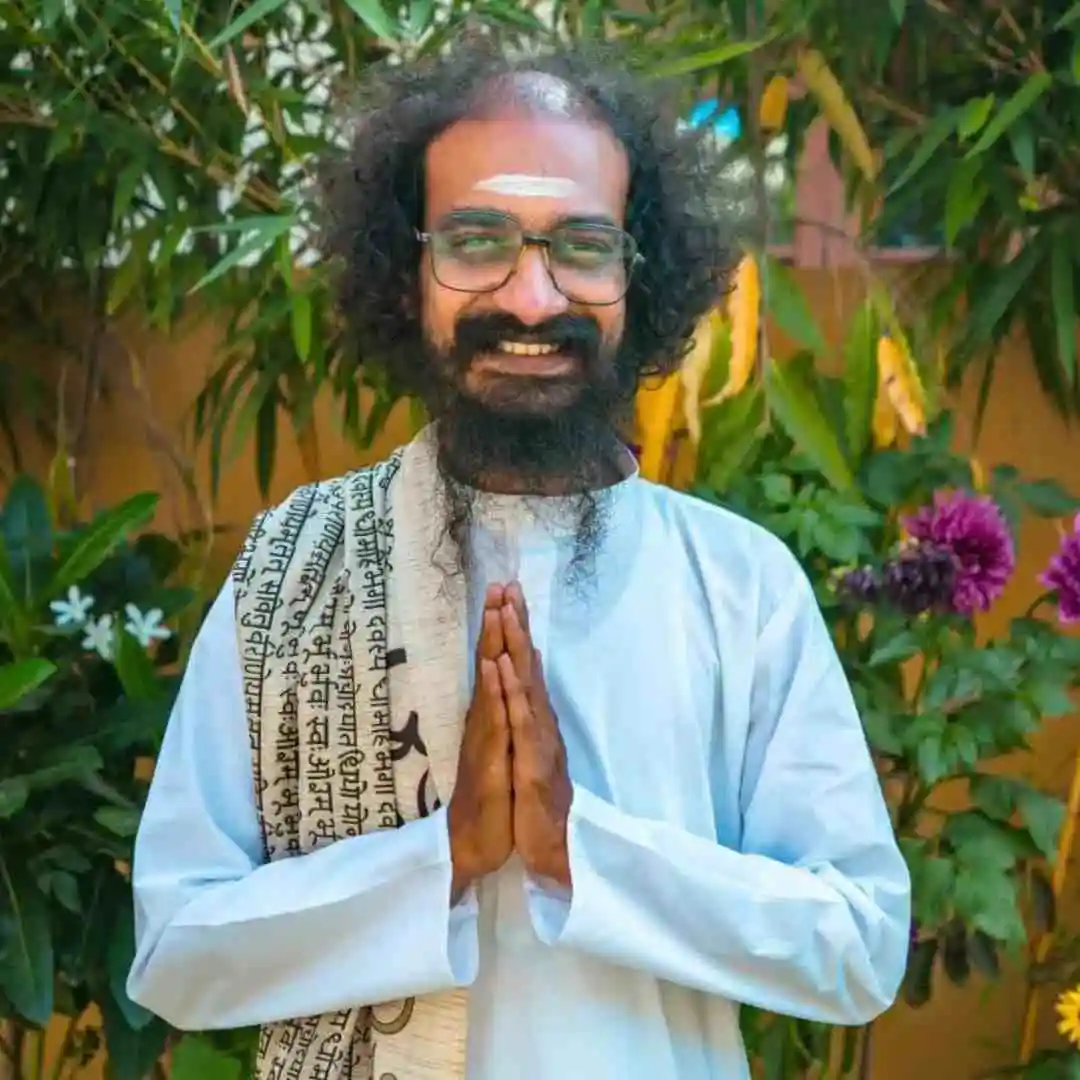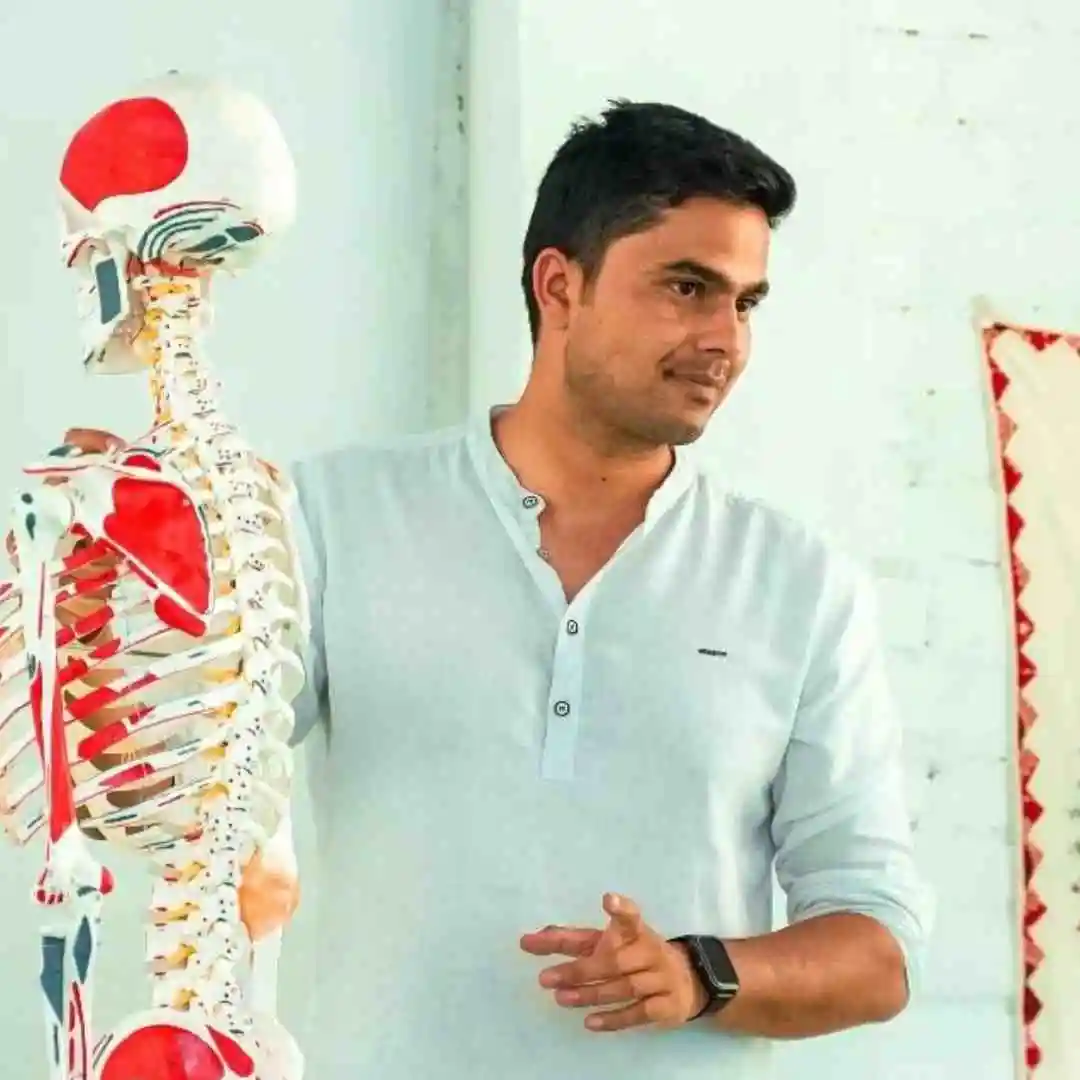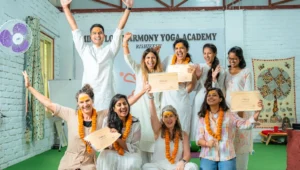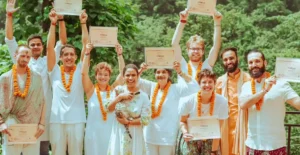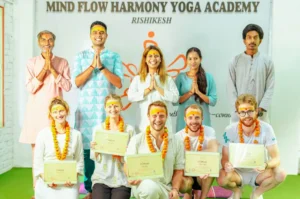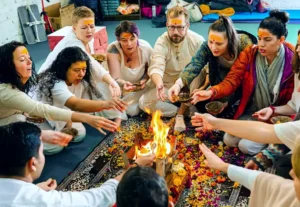200 Hour Yoga Teacher Training in Rishikesh India
- Free Airport Pick Up
- Free Ayurveda Massage
- Mountain Hiking
200 hour yoga teacher training is a course of 25 days of yoga. Our Yoga Teacher Training in Rishikesh aspects can be essential and effortless applied. Our 200 hour YTTC in Rishikesh will be a life changing journey. It will expand your knowledge, grow your practice, and develop your skills. It will make you a certified yoga teacher.
Rishikesh is very well known as yoga capital of India, it provides serene and spiritual area for yoga.
The 200 hour Yoga Teacher Training Course have the 3 techniques that we will be discussing next. The foundation of 200 hour Yoga Teacher Training in Rishikesh is the 3-core-techniques.
- Body-mind functioning
- Developing guiding
- Experiencing yoga beyond postures that we will be discussing further.
The 200 hour yoga teacher training in Rishikesh curriculum includes theoretical and practical classes. You will learn about the history and philosophy of yoga. You will also study anatomy and physiology. Additionally, you will have many opportunities to improve your practice. you will be learning advanced asanas and exploring various pranayama and meditation techniques.
We have a suitable environment to grow. Within the ambit of nature and mountains, one’s transformation accelerates. The 200 hour yoga teacher training certification has accredited by Yoga Alliance USA. This widens the scope for our students, or yoga teachers, to teach globally. Our focus is to provide you skills which mean more than becoming certified.
200 hour yoga teacher training Course in Rishikesh, India - Overview
Mind Flow Harmony Yoga Academy is a top choice for 200 hour yoga teacher training in Rishikesh. With its commitment to providing high-quality knowledge of yoga and a supportive learning environment.
The 200 Hours Yoga Teacher Training in Rishikesh, spans 24 days. It is a complete program that goes beyond the physical aspect of yoga. It provides spirituality and traditional Indian elements like Ayurveda, Karma Yoga, and Chanting. It is important to prepare yourself for physical, mental, and emotional levels. It allows for a deep learning experience.
This training offers a strong base for a deep knowledge of yoga. It includes many important things. Such as pranayama, cleansing practices, and yoga poses from Hatha and Ashtanga Vinyasa styles. Also yoga philosophy, anatomy, relaxation methods (Yoga Nidra), and meditation.

Students undergo six days of training each week with one day off. After completing the training the students qualify for registration with the Yoga Alliance as a Registered Yoga Teacher (RYT 200).
The academy has a team of experienced and dedicated teachers. They help the students in sharing knowledge and guiding students in the yoga journey. It is designed for personal practice. Also provides you with the skills and knowledge to lead yoga classes.
We can tell you many reasons why our 200 hours yoga teacher training in Rishikesh is special. But, we are mentioning only a few as we want you to experience the benefits of this course here itself. Let’s see the major ones.
We have designed 200 hours Teacher’s Training Course method based on understandings. When a students learn about postures they do experimental learning. Once you connect with it, you can learn a lot from it yourself. Knowing something intellectual or theoretical is not the wrong way but it is a very limited way to learn.
Experiencing yoga asanas and postures are very important for this. You will get the first-hand knowledge. And it will enhance your skills.
We assist each person in identifying their own learning style and method. Yoga provides a strong base for one’s personal exploration, hence it requires individual guidance. Our 200 hours Yoga Teacher’s Training provides opportunities for guidance on one-on-one.
Practical teaching abilities are important, in any case whether you are a qualified yoga instructor or aspiring to become. The training we provide here helps you develop the three fundamental abilities you essential need to become a better teacher. We call it the 3-Core-Skills. which is about body-mind functioning, developing guiding commands & experiencing yoga beyond postures.
The training we provide here helps you develop the three fundamental competencies you need to become a better teacher.
Experiencing Yoga beyond postures – Yoga is the union with the higher Self. Doing postures don’t lead us anywhere. When we are stable, steady, aligned with the breath, and meditative, then a posture experienced in a completely different way. The 200 hours YTT course leads you to liberation from the limitations you hold. It enables improved awareness and consciousness. Meditation is a part of our course that creates an inner space in you to receive the grace of Yoga.
Body-mind functioning – It help you in giving the knowledge of body and mind, relation and twisted. No matter what the situation, we suffer if we are out of sync with our true selves. Our yoga teacher training provides a deep knowledge about the body and mind interact. All the human body related facts through the course of human anatomy.
Developing effective instructing or guiding commands – Giving lengthy instructions might interfere with the appropriate coordination of breath and postures since yoga asanas and breathwork go hand in hand. Our 200 hour Yoga Teacher Training Course In Rishikesh has a wholesome approach. Both Beginners and Experienced Yoga Teachers have takeaways. How? Since Yoga is something to lived than theoretical understood. Living Yoga is a lifestyle that entails a practical and wholesome approach.
First, to beginners, we give a taste of basic yoga and leave some tips with them. As they contain more yogic lifestyles, they become more conscious and curious. Then, step-by-step we take them through a deeper level of yoga depending on their receptivity and practice. The 200 hours yoga teacher’s training has everything that prepares a beginner to become a yoga teacher. They get to know about human anatomy, philosophy, practical postures, teaching method, and more.
We have mentioned earlier the 3-core-skills technique. This technique refines your current skills and introduces a lot of new & creative teaching methods. Keeping in mind your personal teaching style, we assist you to enrich it more so that connectivity with your students deepens. These techniques have developed after much experience as even we were once students and teachers of yoga.
Mind Flow Harmony built by people who are free-spirited. We do not impose any standard code of teaching style. We want you to use independent judgment and develop a distinctive teaching manner! All we do is help you with relevant practical skills and knowledge. It will help you to take better decisions and approaches in your yoga journey.
Mind Flow Harmony has trained growing number of over 800 yoga teachers in this area. It has offered more than 60+ online courses in the last two years. After regular interactions, observations, and feedback from all the teachers. we have structured this course with a practical approach.
Our teachers are experts! Coming from various backgrounds and experiences has an added advantage. They have enough knowledge to guide students and bring out the best versions of them. We trust in quality more than quantity. Hence, we found the best teachers who can impart this ancient science to future teachers.
Perpetual Guidance! We have your back even after you finish the course. Every true yoga teacher knows that Yoga is a lifetime of learning unless we liberated. So, wherever you are, we are available to clear up the yoga-related confusion you have.
Hatha Yoga, derived from Sanskrit, combines “Ha” (Sun) and “Tha” (Moon), symbolizing balance. Opposite to being hard, it’s about giving peace to body, mind, and spirit. It includes physical postures (asanas) and breathwork. It is an old practice associated with Lord Shiva and Shaivism. Siddhas, Naths, and followers of Goraknath stand for this tradition. It is perfect for beginners. It offers more than a sequence of poses; it’s a spiritual journey toward a lifeline. Hatha Yoga cleanses the Pingla Nadi (sun energy channel).
It also cleanses the Ida Nadi (moon energy channel), known as vital energy pathways in the body. It’s a holistic, ancient path to spiritual growth and physical well-being.
The term “Ashtanga” came from Sanskrit. It combines with “Ashta” (eight) and “Anga” (limb). It highlights the eight-limb path of yoga that leads to Samadhi. These eight limbs are present in Patanjali’s Yoga Sutras. Patanjali’s teachings in Sadhana Pada state the sloka “Yama, Niyama, Asana, Pranayama, Pratyahara, Dharana, Dhyana, and Samadhi” are the eight components of yoga. Ashtanga Yoga focuses on balancing the mind and body.
It improves spiritual growth and complete well-being. Ashtanga yoga practice includes very hard physical and mental training. This training is included in 200 hours yoga teachers training in Rishikesh and it demands strength and flexibility.
Vinyasa Yoga is all about the seamless connection of breath and movement. Each posture tells about the next posture. Its synchronization makes it different from other styles. None of the vinyasa classes have a similar style or way of practice. Vinyasa practice starts with Surya Namaskar, or “Sun Salutation,”. Sun Salutation blends breath control with difficult movements.
It’s an excellent way to stay active and nurture your complete well-being. It includes physical and mental fitness to emotional growth. Vinyasa Yoga excels in all these aspects.
Mental well-being stands equal to physical health. As we work on our bodies, our minds need exercise too. Meditation is the key to nurturing a peaceful and strong mental state. It’s not a set of routines; it demands fixed focus and mindfulness. When your soul, or chitta, is balanced, it improves your ability to focus. Even during physical activities and exercise your mind should be stable.
The 200 Hour Yoga Teacher Training in Rishikesh introduces different meditation techniques. Starting from relaxation to stress reduction. This is an ancient practice that is loved by mentors. It aids in removing difficulties on the path to spiritual and complete well-being. Meditation is a strong tool that grows the fitness and peace in our bodies.
(Bhagavad Gita Chapter 3, Verse 37).
अभ्यासयोगयुक्तेन्द्रियाण्याशु वर्तन्ते मनः |
नियम्य संस्थितं मन्येत ये तान्याहुरिक्षिताः ||
It means “The minds act like an enemy for those who do not control it.”
Meditation happens in 3 stages – Dharana, Dhyana, and Samadhi. Dharana is the first stage, followed by Dhyana, and finally Samadhi. Let’s take a closer look at each of these three components to get a better understanding of what they are.
- Dharana: This is the first stage of meditation where one focuses on a single object or thought. This stage helps to quiet the mind and bring a sense of inner peace.
- Dhyana: This is the second stage of meditation where one enters into a deep state of relaxation and concentration. This stage helps to gain clarity and insight into the true nature of the self.
- Samadhi: This is the third and final stage of meditation. This stage brings a heightened state of awareness, inner stillness and union with the divine. It helps to experience true peace, bliss and joy.
Regular meditation practice helps to reduce stress and anxiety, resulting in a more balanced and peaceful state of mind.
By developing a regular practice of meditation, individuals can gain a greater understanding of thought patterns, allowing them to recognize when their minds are leading them down a negative path and take steps to change their thoughts and actions.
Pranayama is a Sanskrit term that comes from “Prana,” meaning life energy, and “Yama,” control. It can summarized as the practice of managing life force. It focuses on regulating the breath. It is a fundamental aspect of preserving both physical and mental well-being. Pranayama starts with the flow of inhaling, holding, and exhaling. It acts as a powerful break for removing all the bad emotional and mental patterns. Consistent practice yields holistic benefits, impacting your entire body.
Pranayama could be done alone with yoga postures (asanas) and meditation (Dhyana). The teamwork between breath control and mindfulness enhances its effectiveness. The main goal of pranayama is to start a great mind-body connection while supplying the body with oxygen and removing toxins. It gives you holistic health with all good energy.
BG 4.29-30:
अपाने जुह्वति प्राणं प्राणेऽपानं तथापरे |
प्राणापानगती रुद्ध्वा प्राणायामपरायणा: ||
अपरे नियताहारा: प्राणान्प्राणेषु जुह्वति |
सर्वेऽप्येते यज्ञविदो यज्ञक्षपितकल्मषा: ||
It means
Still others offer as sacrifice the outgoing breath in the incoming breath, while some offer the incoming breath into the outgoing breath. Some arduously practice prāṇāyām and restrain the incoming and outgoing breaths, purely absorbed in the regulation of the life-energy. Yet others curtail their food intake and offer the breath into the life-energy as sacrifice. All these knowers of sacrifice are cleansed of their impurities as a result of such performances.
To know more you can login to- https://www.holy-bhagavad-gita.org/chapter/4/verse/29-30
Yoga anatomy tells how yoga postures, breathing exercises, and relaxation help the body. It includes the knowledge of muscles, bones, joints, and nervous system. Yoga anatomy also includes the energy route and body system. Even it tells how they interact with each other while doing different yoga poses and movements.
These are some key concepts in yoga anatomy:
- Patterns: how the body is set and angled in different yoga poses.
- Range of motion: the amount of movement available in each joint and muscle.
- Muscle activation: how different muscles involve and work during yoga poses
- Breath: how the breath can affect movement and sensation in the body during yoga practice
Yoga anatomy is like a mix of different things, such as how our body works, moves, and stays balanced. It helps our bones, muscles, movement of joints, and breathing. Learning about yoga anatomy gives us knowledge about our bodies better when we do yoga. It helps in making our yoga practice safer and keeps us away from injuries. Even Yoga anatomy is important to keep our bodies in the right position. It is like a guide that improves how we stretch, bend, and become stronger when we do yoga. So, it is all about getting to know our bodies and enhancing our yoga practice.
Yoga Anatomy is important for yoga teachers to understand how to guide their students. The knowledge of anatomical structure helps teachers how some postures are beneficial. It tells about some important aliments and injuries which should be known by students.
Learning yoga anatomy is important for yoga teachers to provide effective guidance. Yoga Anatomy helps teachers to understand the body’s workings. This knowledge helps teachers to provide safe instruction. It gives modifications and keeps away injuries from students.
Knowing yoga anatomy allows teachers to provide changes in yoga postures. Yoga anatomy also helps teachers in well communication with their students. It helps in a better understanding of the movements and sensations of different yoga poses
Yoga Therapy is a mixture of old yoga practice and modern medical knowledge. Yoga Therapy is a holistic approach to healing. It has been a part of Ayurvedic medicine, which aims to create peace in both body and mind. This therapy offers a safe and natural way to remove various health issues. The main issues include chronic pain, anxiety, depression, asthma, and insomnia.
Yoga Therapy applies yoga techniques like postures (asanas), breathing exercises (pranayama), and meditation. Hence the balance can be restored to the body system. There are so many benefits of Yoga Therapy including energy, flexibility, reduced stress and anxiety. It helps in better sleep, enhances the immune system, and improves focus and self-awareness. It is helpful for those who are suffering from Arthritis or Fibromyalgia. It focuses on achieving long-term improvements. It ends the diseases by the basic balances of physical, mental, and spiritual levels.
Yoga Therapy provides relief while strengthening the body and mind. It is a complete method that promotes well-being. It also offers a way to healing and life-changing.
Eligibility to Join 200 hour yoga ttc in Rishikesh, India
The only criterion for our students at 200 hour Yoga ttc in Rishikesh is that they have an open mind and an appetite for learning and growth. At least 2 months of Yoga Practice is recommended though not required.
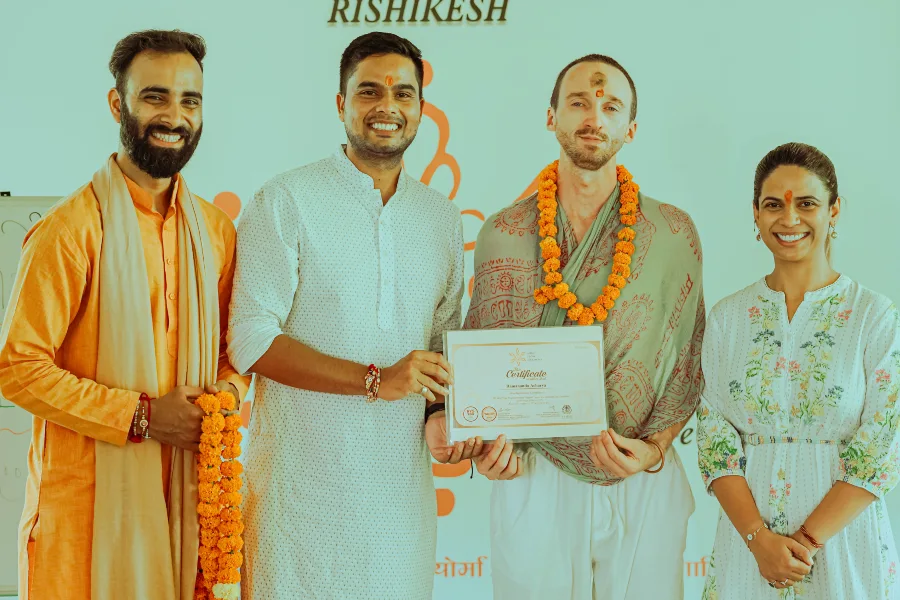
200 Hour Yoga Teacher Training In Rishikesh, India - Curriculum
Part 1
- Unit 1 – Philosophy
- Unit 2 – Sanatan Classical Yoga
- Unit 3 – History of Yoga
- Unit 4 – What is yoga & what is not yoga
Part 2
- Unit 1 – Patanjali’s 8 limbs of Yoga
- Unit 2 – 7 stages of Hatha Yoga
- Unit 3 – Types of Shatkarma & its benefits
- Unit 4 – Samadhi and 3 levels of yoga practitioners
Part 3
- Unit 1 – The four paths of yoga – Jnana, Bhakti, Karma & Raja Yoga
- Unit 2 – Purpose and principles of yoga
- Unit 3 – Styles of yoga – Hatha, Vinyasa, Ashtanga, Yin, Power, Iyengar, Kundalini & Bikram Yoga
Part 1
- Unit 1 – What is Meditation? What is ‘not’ Meditation?
- Unit 2 – Meditation History & Philosophy.
- Unit 3 – Difference between meditation and mindfulness.
- Unit 4 – How to get in and come out of Meditation?
- Unit 5 – Being in a Meditative state?
- Unit 6 – Benefits of meditations & mindfulness – physical, psychological, emotional, spiritual.
Part 2
- Unit 1 – Understand the relationship between meditation and breathing.
- Unit 2 – Learn the secrets of breathing for deeper meditation.
- Unit 3 – How to breathe correctly during meditation.
- Unit 4 – Breathwork as a healing and support mechanism: anxiety, stress, depression, asthma and breathlessness, sleep disorder, etc.
Part 3
- Unit 1 – General principles to conduct guided meditation
- Unit 2 – Theory and Practice
Part 1
- Unit 1 – Yoga anatomy and its importance
- Unit 2 – Body Movements
- Unit 3 – Understanding the Joints
- Unit 4 – Applied Anatomy of the Spine
- Unit 5 – Understanding the muscular system
- Unit 6 – Role of the spine in yoga
- Unit 7 – Safe steps towards asana practice
Part 2
- Unit 1 – Yogic Physiology
- Unit 2 – Digestive system & digestion processes
- Unit 3 – Circulatory system
- Unit 4 – Lymphatic System
- Unit 5 – Nervous System
- Unit 6 – Types of blood cells and their function
Part 1
- Unit 1 – Pranayama and its benefits
- Unit 2 – Types of pranayama & their benefits
- Unit 3 – 4 stages of pranayama
- Unit 4 – General Guidelines for the Practitioner
- Unit 5 – Effects and influences on the body and the mind.
- Unit 6 – Science behind Pranayama.
- Unit 7 – Healing through pranayama.
Part 2
- Unit 1 – Anatomy & Physiology of Breathing
- Unit 2 – Breathing techniques – beginner, intermediate & advanced level practitioners
Part 3
Qualities, Purposes, and Benefits of each Breathing Technique
- Unit 1 – Breathwork: how does it differ from pranayama?
- Unit 2 – Key elements for natural, effective & safe pranayama and breathwork.
- Unit 3 – Breath-centred yoga: Body-based movement breathing.
- Unit 4 – Connection between breath and emotional state.
- Unit 5 – How to develop a self-practice and keep it going.
Part 1
- Unit 1 – General rules for asana practice
- Unit 2 – Preparation, food, injuries & precautions
- Unit 3 – Breath & posture coordination
Part 2
- Unit 1 – Pawanmuktasana Series
- Unit 2 – Hatha Yoga Surya Namaskar
- Unit 3 – Ashtanga Vinyasa Surya Namaskar
- Unit 4 – When & where to practice Surya Namaskar
- Unit 5 – Surya Namaskar with posture-specific mantra
Part 3
- Unit 1 – Standing Asanas
- Unit 2 – Forward bending & Backward bending asana
- Unit 3 – Inversion Asana
- Unit 4 – Spinal twisting
- Unit 5 – Arm balancing asana
- Unit 6 – Hip Opening Asanas
- Unit 7 – Meditation Asana/Postures
Upcoming Course Date & Fee Of 200 Hour Yoga Teacher Training in 2024
| Course Name | Date | Availability | Shared Room | Private Room | Booking |
|---|---|---|---|---|---|
| 200 Hour Yoga Teacher Training In Rishikesh | 10th Jan - 3rd Feb 2024 | Booking Closed | 1250 USD | 1800 USD | Booking Closed |
| 200 Hour Yoga Teacher Training Course in Rishikesh | 10th Feb - 4th Mar 2024 | Booking Closed | 1250 USD | 1800 USD | Booking Closed |
| Best 200 Hour Yoga Teacher Training In Rishikesh | 10th Mar - 3rd April 2024 | Booking Closed | 1250 USD | 1800 USD | Booking Closed |
| 200 Hour Yoga Teacher Training In Rishikesh India | 10th May - 3rd June 2024 | Booking Closed | 1250 USD | 1800 USD | Booking Closed |
| Best 200 Hour Yoga Teacher Training Course In Rishikesh | 10th June - 4th July 2024 | Booking Closed | 1250 USD | 1800 USD | Booking Closed |
| Best 200 Hour Yoga Teacher Training Course In Rishikesh | 10th Aug - 3rd Sep 2024 | 5 Seat Left ✓ | 1250 USD | 1800 USD | Book Now |
| 200 Hour Yoga Teacher Training Course in Rishikesh | 10th Oct - 3rd Nov 2024 | 5 Seat Left ✓ | 1250 USD | 1800 USD | Book Now |
| Best 200 Hour Yoga Teacher Training Course In Rishikesh | 10th Nov - 4th Dec 2024 | 7 Seat Left ✓ | 1250 USD | 1800 USD | Book Now |
Course Name: 200 Hour Yoga Teacher Training In Rishikesh
10th Jan - 3rd Feb 2024
Shared Room
$1250
$1450
Private Room
$1800
$2000
Course Name: 200 Hour Yoga Teacher Training Course in Rishikesh
10th Feb - 4th March 2024
Shared Room
$1250
$1450
Private Room
$1800
$2000
Course Name: Best 200 Hour Yoga Teacher Training In Rishikesh
10th March - 3rd April 2024
Shared Room
$1250
$1450
Private Room
$1800
$2000
Course Name: 200 Hour Yoga Teacher Training In Rishikesh India
10th May - 3rd June 2024
Shared Room
$1250
$1450
Private Room
$1800
$2000
Course Name: Best 200 Hour Yoga Teacher Training Course In Rishikesh
10th June - 4th July 2024
Shared Room
$1250
$1450
Private Room
$1800
$2000
Course Name: Best 200 Hour Yoga Teacher Training Course In Rishikesh
10th Aug - 3rd Sep 2024
Shared Room
$1250
$1450
Private Room
$1800
$2000
Course Name: 200 Hour Yoga Teacher Training Course in Rishikesh
10th Oct - 3rd Nov 2024
Shared Room
$1250
$1450
Private Room
$1800
$2000
Course Name: Best 200 Hour Yoga Teacher Training Course In Rishikesh
10th Nov - 4th Dec 2024
Shared Room
$1250
$1450
Private Room
$1800
$2000
Sample Schedule 200 Hour Yoga Teacher Training Course in Rishikesh, India
6:00
Wake up
7:00 to 8:30
Meditation/Pranayama/Shatkarma
8:30 to 9:00
Tea/Fruits in silence
9:00 to 10:30
Asana Practice
10:30 to 12:30
Brunch with Silence
12:30 to 14:00
Anatomy & Physiology
The Right Schedule for the Right Practice
The course’s modules, which cover the following topics are meant to gradually and methodically improve your knowledge and teaching abilities. The curriculum is custom-designed based on our own experiences while we were learning as well as teaching.

14:00 to 15:00
Philosophy Practice/ Teaching methodology
16:30 to 18:00
Asana Practice Adjustment/Alignment
18:30 to 19:30
Dinner
19:30 to 20:30
Mantra Chanting/ Silent meditation/ Satsang/Community time
21:00
Lights off
Note: Schedule is subjected to change.
Refund Policy of 200 hour yoga teacher training Rishikesh, India
- All deposits are non-refundable but can be transferred to other upcoming trainings at Mind Flow Harmony Yoga Academy.
- The deposit is valid for 3 months.
- If you wish to cancel, be sure to notify Mind Flow Harmony info@mindflowharmony.com of your cancelation at least one week before the course start date.
- Once training is started, no cancellation will be accepted.
Fees Includes - 200 Hour Yoga TTC In Rishikesh Accommodations, Food, Activity Etc.
- Certificate of completion of 200 hour Yoga ttc in Rishikesh Or Eligibility to register with Yoga Alliance USA upon completion of the course.
- 24 nights accommodation.
- Complimentary pick-up from Dehradun Airport (DED) to the school.
- 1 full-body Ayurvedic massage with herbal oil.
- Two fresh organic nutritious vegetarian meals each day for the duration of the training, including all-day, help-yourself-filtered water, and herbal teas (Vegan and gluten-free options available).
- Mind Flow Harmony course manual, shatkarma cleansing kit, 2 textbooks, and pen.
- 1 special meditation session of the most appreciated emotional release: letting go of past painful emotions.

Shared Room

Rooms of Mind Flow
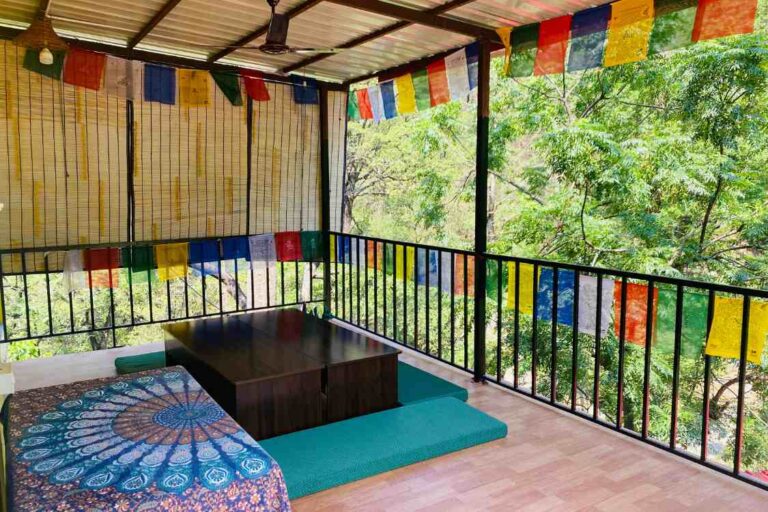
200 Hour Yoga Teacher Training In Rishikesh
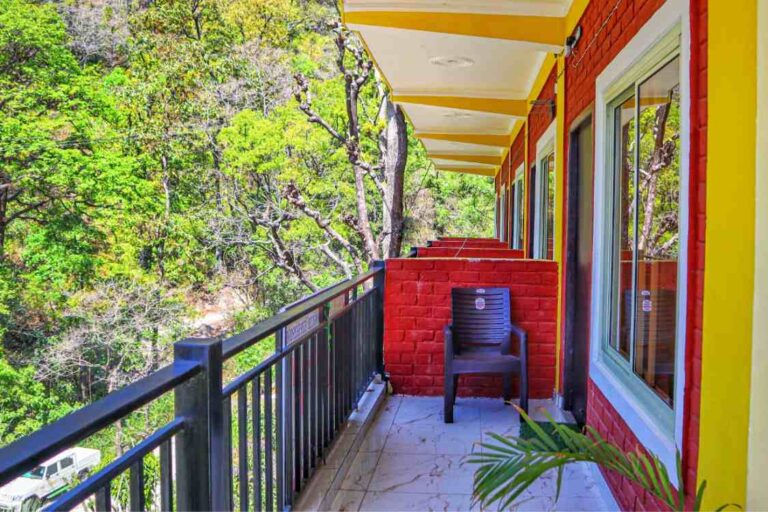
200 Hour Yoga Teacher Training In Rishikesh

200 Hour Yoga Teacher Training In Rishikesh

Backside View

Mind Flow Harmony Building

Foods
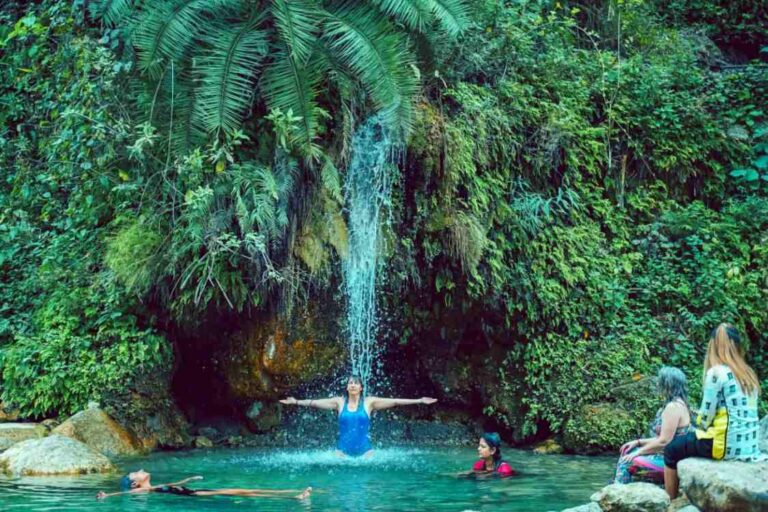
200 Hour Yoga Teacher Training In Rishikesh
Meet Our Yoga School Teacher's
Testimonial
Question You Have To Know About 200 Hour YTTC
To become a yoga instructor in Rishikesh, person should complete certification course in yoga teacher training from yoga school which is yoga alliance certified. There are various yoga teacher training courses offered in Rishikesh like 100 hour YTTC, 200 hour YTTC and more.
Mindflow Harmony Yoga Academy is the best for yoga teacher training, yoga retreats and yoga for beginners. It is located amidst the lush greenery and waterfalls around, in Rishikesh. It is famous for 100 hour TTC, 200 hour yoga teacher training in Rishikesh as well as 5 days yoga retreat, 7 days yoga retreat and 10 days yoga retreat program for relax and rejuvenation.
200 hour yoga teacher training cost can vary depending upon the location and yoga school. At Mind Flow Harmony Yoga Academy in Rishikesh the cost of 200 hour yoga teacher training program is 1250 USD with accommodation (shared room) and 1800 USD for private room.
200 hour YTT requires 24- 26 days to complete the yoga teacher training program.
YTT 200 is a 200 hour yoga teacher training program that provides a foundational understanding of yoga philosophy, anatomy, teaching methodology, and practical experience.
YTT 300, on the other hand, is an advanced level of training designed for individuals who have already completed YTT 200 and seeking to expand their knowledge and expertise in yoga teaching.
YTT 200 refers to the number of hours completed in a yoga teacher training program, while RYT 200 signifies that an individual has completed a Yoga Alliance-approved 200-hour training program and is registered with the organization.
200 hour yoga teacher training is a yoga alliance certification course which provides practical experience and skills necessary to start teaching yoga classes. 200 YTT offers opportunities to deepen your own yoga practice by gaining a solid foundation in yoga philosophy, anatomy, and teaching methodology.
A 200 hour yoga teacher training offers the necessary knowledge and skills to start teaching yoga classes and opens up opportunities for further growth and specialization in the field.
It provides a comprehensive foundation in yoga philosophy, anatomy, teaching methodology, and practical experience.

5 Days Yoga Retreat In Rishikesh India
Meditation, Yoga Nidra & Mindfulness Retreat
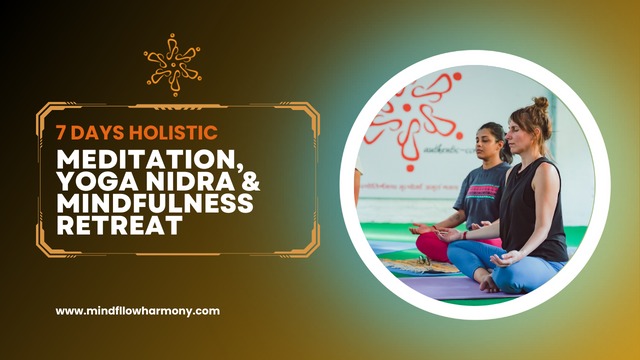
7 Days Yoga Retreat In Rishikesh India
Meditation, Yoga Nidra & Mindfulness Retreat
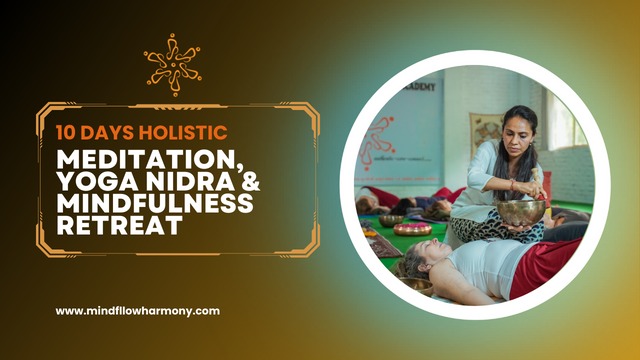
10 Days Yoga Retreat In Rishikesh India
Meditation, Yoga Nidra & Mindfulness Retreat
Code Of Conduct
(Please read them carefully Before Join 200 Hour YTTC)
- Class routine and discipline are mandatory, and any negligence without prior notification may result in termination of studentship without a refund.
- Maintain an atmosphere of mutual respect and avoid all forms of harassment and violence.
- Use respectful language, avoid vulgarity, insults, abusive language, and verbal threats.
- Avoid public displays of affection, public nudity, and maintain celibacy during the Yoga course.
- Prohibit possession, use, or distribution of alcoholic beverages or illegal/recreational drugs.
- Maintain silence between 10:00 pm and 6:00 am, and avoid making false statements about others.
- Avoid entering into intimate relationships with an imbalance of power or bias.
- Avoid smoking, alcohol, non-prescription drugs, and consuming meat, fish, and eggs during the program.
- Photography and video filming are generally not allowed during Yoga training.
- Encourage students to stay in the same town venue throughout their stay unless agreed upon.
- No refund or adjustment of fees for students leaving the course before completion.
- Karma Yoga is required daily to eliminate egoistic tendencies.
- Absenting oneself from the scheduled program without permission may result in termination.
- Maintain a positive, team-oriented, and optimistic attitude.
- Inform the lead teacher if specific help is needed regarding the course and food.
- Mind Flow Harmony Yoga Academy does not arrange for guests of students, and unrelated activities are not allowed.
- Notify the academy in advance if forgoing a meal to prevent food wastage.
- Clear all dues and return library books before departing from the academy.
- Acknowledge that breaking the rules may lead to expulsion without refunds.
- Confirm understanding of the intense and challenging nature of the training program, which requires full-time commitment and the absence of other activities.



